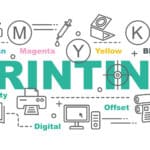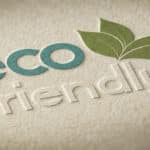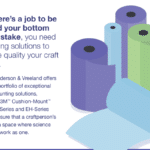Flexographic Printing Plates: Which Platemaking System is Right for You?
At some point, many printers will consider bringing the flexographic platemaking process in-house. At a certain volume, making your own flexographic printing plates can offer significant cost savings. Plus, in-house platemaking offers the ability to respond quickly and reproduce a plate immediately when an existing plate gets damaged or worn out.
What’s more, an in-house flexographic platemaking process can lead to enhanced project quality as platemakers and printers are now working under the same roof with the ability to coordinate and collaborate. Sometimes issues in print production can be addressed with adjustments in the plate, and this sort of communication is just naturally easier when everyone is on the same team.
Thankfully, advances in technology and polymer technology mean it’s easier than ever to manufacture your own flexographic printing plates. This post introduces the main options available for flexographic platemaking and considerations you’ll want to make when choosing your system.
We cover these four types of flexographic printing plates:
- Water wash
- Solvent
- Thermal
- Liquid
But first, let’s make sure we’re all on the same page when it comes to conventional vs. digital platemaking…
Conventional vs. Digital Platemaking
Conventional platemaking begins with a negative, similar to a photographic film process. Using this negative, the plate material is exposed to UV light. With exposure to light, chemicals on the plate bond together, forming the base of the image. The plate then goes through a wash process – using water or solvent – to remove the unexposed area and create a plate with a raised image.
With digital platemaking, we remove the film from the process. Instead, the initial plate material is covered with a thin black mask. An imaging device uses ablation (lasers) to remove that mask in accordance with the image to be transferred. This is often referred to as direct “computer-to-plate” (CTP) technology. As above, the plate is then exposed to UV light and processed using a washout method.
Primarily the industry has moved to digital platemaking. When we talk about water wash and solvent methods below, we’re generally assuming your shop will be adopting a digital platemaking system.
Water Wash
Water-wash systems offer high-quality imaging with eco-friendly benefits. Water-wash platemakers are one of the most environmentally friendly ways to create flexographic printing plates because they are solvent-free and reduce VOC emissions in the printing process. Water-wash systems reclaim water used in the washout process, recirculating it back into the system for reuse.

Benefits:
- Quality: Water-wash flexographic printing plates can hold a very fine detail. They’re dimensionally stable and offer clean printing.
- Chemical-free: This type of processor is for printers who want to print their plates without worrying about toxic washout chemicals and solvents.
- Speed to production: Compared to solvents, plates can be completed in a much shorter drying time.
Considerations:
- Plate size: Most water-wash systems are designed for plates up to 25×30 inches.
Maintenance: If water-wash systems are not maintained properly, they can introduce residual polymer residue to your printing equipment. We all know that when we’re out there on the production floor, it’s all about throughput. But if maintenance falls off, you’re going to have downtime issues. So be aware of your maintenance culture and any change management you’ll need to implement before producing your own water-washed plates.
Solvent
In the flexographic printing industry, solvent platemaking systems have been around the longest. They’re popular due to the low upkeep and maintenance compared to all other types of photopolymer plate processing. Such systems make use of chemical solvents during the washout process and provide a high level of productivity for users.

Benefits:
- Quality: Traditionally, this offered the highest plate quality available, but thanks to advancements in technology the other platemaking systems have caught up.
- Maintenance: Lowest upkeep compared to platemaking systems.
Considerations:
- Cost: Requires a large capital investment that only makes sense for the largest, highest-volume platemaking shops.
Chemical exposure and waste: Although solvent plate processing is less environmentally friendly than other types of processing, such as water-wash and thermal, there have been many recent developments of environmentally friendly and non-hazardous washout solvents. These new solvents offer lower odors, HAPs, and VOC alternatives which can reduce environmental and operator risk.
Thermal
Thermal platemaking can be a great option for printers who are bringing their plate production in house. The price point typically makes sense for printers who are doing at least 3,000 square feet annually – or roughly 12 plates per week, 48/month.
Thermal processors involve no water, liquids, or chemistry, which is a major advantage for many printers. Instead of using a washout process, the unexposed areas of the photopolymer plate are mechanically removed using heat and rollers.
The developer rolls (also known as blotting, wicking, or take-up rolls) cannot be reused multiple times and are a consumable in the process. As part of our thermal platemaking packages, Anderson & Vreeland offers a recycling program. When you’re done using your plates and developer rolls, they’ll be picked up by a third party who will handle the waste responsibly and recycle any reclaimable materials.

Benefits:
- Ease of use: Thermal platemaking is the simplest process, making it an attractive solution for young, less-experienced printmaking teams. If your experienced platemakers are aging out of the workforce, thermal processing offers labor and training benefits.
- Quick turn times
- Maintenance: Lower maintenance and operating costs than water-wash and solvent.
- Quality: Now able to match solvent plates. Excellent edge definition and improved print consistency across repeated print runs.
- Size: Scalable to handle large-size plates.
Considerations:
• Volume for ROI: Requires a minimum volume of approximately 48 plates per month to be cost effective for most printers
Liquid
If you’re a corrugator printing pizza boxes, grocery boxes, food packaging and want a high-quality product that is economical and efficient to run, liquid plate processing is the best solution for you.
Liquid plate making equipment has an exposure unit, UV lights, and a washout system. To create liquid photopolymer plates, printers need to place the image negative on the exposure unit and cover it with a transparent sheet. A liquid photopolymer resin is then spread and rolled evenly on top of the transparent sheet. After two rounds of exposure to UV light, the exposed plate is then washed out to remove the unhardened photopolymer.

Benefits:
- Size: Liquid platemaking can accommodate the largest, wide-web plates.
- Sustainability: Unexposed resin can be captured in a reclamation unit. There’s no worry about right-sizing your plate material to reduce waste.
- Cost: Liquid platemaking is particularly cost effective for corrugated printers where the presses use thicker plates.
Considerations:
• Application specific: Liquid printmaking is generally not the cost effective option for narrow web printers.
Your Supplier for Flexographic Printing Plates…
Not ready to produce your own flexographic printing plates? Anderson & Vreeland can help you evaluate your current plates and help you find the right flexo plate supplies for your print shop. Flexographic printing plates are available in a range of thicknesses and can be used with water- and solvent-based inks.
…And for Flexo Platemaking Equipment
For printers ready to bring the platemaking process in house – and those looking to upgrade their flexo plate equipment – Anderson and Vreeland offers specialized support and resources. We can help ensure your platemaking system offers optimum ROI for your shop, helping you find the right solution for your print jobs, floor space, and sustainability goals.



